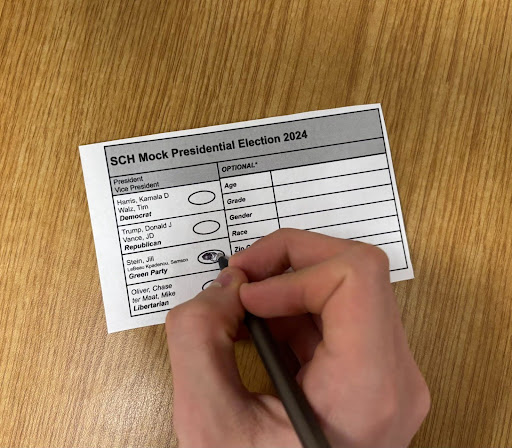Have you ever thought about the actual impact of your vote in statewide elections? How much a single person’s vote matters is deeply tied to voting district plans in states. As a part of my AP Gov civic action project, I chose to look at potential gerrymandering in congressional district maps for certain states. I was interested in looking at the process of redistricting because of the quantitative nature of it– I’d generally consider myself to be a math person so this type of process interests me. I chose to look at Michigan specifically because I have a lot of family there and I will be attending college in Michigan, so these districts will directly affect politics near me and people close to me in the future. I chose to look at the Congressional district of Michigan since there are only 13, which would make examining them much less overwhelming. When examining district maps, I used the following criteria:
One Person, One vote: every single district should weigh a single vote equally based on how many voters there are compared to the other districts. Reasoning: I believe that before anything else, everyone’s vote must be represented equally across districts because otherwise not everyone has the same power when voting.
Proportional Districts: while keeping districts mostly contiguous, overall district voting margins should be roughly proportional to the representation of each party across the state. I believe that because of the “winner takes all” nature of each district, it’s necessary for the districts to be manually districted in a way that ensures that both parties are fairly represented.
Minority Representation: minority demographics should not be drowned out by majority voters overall in districts. This means possibly compromising completely normally shaped districts. I believe that this is an extremely important component of redistricting because democracy is meant to be governed through the voice of the people– if minorities cannot get representation in government, then democracy does not fulfill its goal.
When examining the statistics, I actually found that Michigan’s map was already very strong in all of my criteria. The lowest score was in splitting, which refers to how consistently the splitting of counties occurs when drawing districts, so a lower score means that counties are split between districts more frequently. However, I do not believe that this factor is nearly as important as others when designing a fair district plan. County lines can be very arbitrary, and often meaningless, so splitting them up should not have a strong negative effect on voter representation. It’s not just these numbers that support the fairness of the existing Michigan districts. PlanScore, a site that provides even more statistics about district map bias, supported the fairness of the Michigan map, which reads as a 50-50 share given a 50-50 vote scenario. Ideally, both numbers would be at exactly 50%, which would indicate a perfectly proportional representation; Michigan’s plan hits the mark dead on. I think that this is a great marker for fairness, because it means that both Democrat and Republican votes are receiving equal weight and importance in the grand scheme of things. Furthermore, due to Michigan’s nature as a swing state, one that can go either way in elections, this becomes even more important.
After examining community created “optimized” maps, they still barely beat out the current Michigan map in my desired categories. Why is that though? Why don’t all states have such an effective district plan? The answer to this most likely lies in the fact that Michigan’s district plans are created by an independent, non-politician commission. Evidently, when political interests and partisan majorities are taken out of the equation for redistricting, the result is a fair map such as Michigan’s that most people, regardless of party affiliation, could agree upon.
For comparison of what district plans can look like without independent commissions, consider Tennessee’s congressional district plan. Tennessee’s congressional district plans are passed by a simple majority in the legislature, which effectively leaves the party with the legislative majority complete control of congressional districts. In the same scenario where the vote is split 50-50, Republicans would get a whopping 60% of the congressional seat share. Not exactly what most would consider fair. Looking more closely at the map of Tennessee, the way in which one particular area is districted is quite eye-catching. Nashville, a city that has a generally Democratic population, is basically split into three, which takes the voting party away from Democrats in this region. This is a textbook gerrymander, and an extreme one in this case. However, there is little to be done about the state of this district map due to the fact that it is drawn and passed by the legislature with a simple majority vote. This type of gerrymandering happens frequently across many states, ultimately harming everyone in our democracy.
Comparing Michigan’s and Tennessee’s congressional district plans exposes just how much of a difference an independent, non-political districting commission can make when creating district maps. Without politics or partisan bias involved, we can be sure that maps are statistically and ethically sound and that they represent everyone. Ensuring that every person’s vote is counted in a meaningful way is key to a sound democracy, and slowly switching to independent districting commissions would most definitely be a step in the right direction for our democracy.
Works Consulted
Daves Redistricting. “DRA 2020,” 2020.
https://davesredistricting.org/maps#home.
Planscore.org. “PlanScore: Michigan,” 2022. https://planscore.org/michigan/#!2022-plan-ushouse-pb.
The New York Times. “In Nashville, a Gerrymander Goes beyond Politics to the City’s Core (Published 2022).” 2024.









































